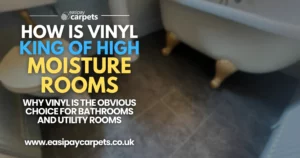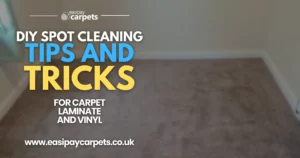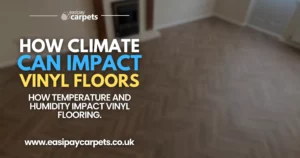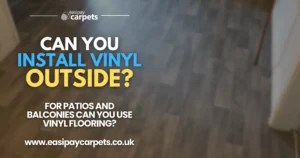
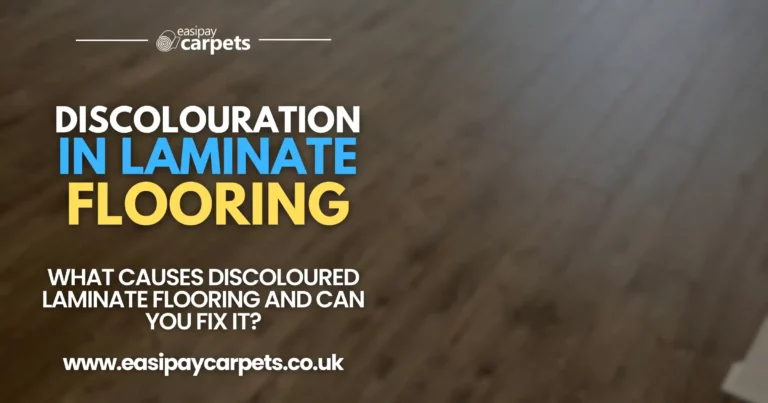
Understanding Laminate Floor Discolouration: Causes and Prevention
Laminate flooring is a popular choice for its affordability, durability, and realistic appearance. However, one issue that can affect laminate over time is discolouration. If you’ve noticed parts of your laminate flooring looking faded, yellowed, or otherwise discoloured, you’re likely wondering what causes it and how to prevent it. In this post, we’ll discuss the most common reasons for discoloration in laminate flooring, ways to address the issue, and steps you can take to keep your floors looking their best.
Common Causes of Discoloration in Laminate Flooring
Understanding the factors that lead to discolouration can help you prevent and address this issue effectively. Here are the main culprits that commonly cause laminate flooring to lose its colour.
1. Sunlight Exposure
Direct exposure to sunlight is one of the most common causes of laminate floor discolouration. Over time, UV rays can cause the colours in laminate to fade, creating uneven patches where sunlight hits the floor. Rooms with large windows or south-facing exposures are particularly vulnerable to this kind of fading.
2. Water Damage and Moisture
Moisture is a significant factor in laminate floor discolouration. If water seeps into the floor’s seams, it can cause the laminate to swell and discolour. This is especially common in areas like kitchens, bathrooms, and basements, where moisture levels are higher. Spills or leaks left unattended can lead to water staining and, eventually, mould or mildew growth, further altering the floor’s appearance.
3. Chemical Reactions from Cleaners
Using the wrong cleaning products can also lead to discolouration. Some harsh chemicals or abrasive cleaners may damage the laminate surface, causing it to yellow or dull. Wax-based or oil-based cleaners are not recommended for laminate, as they can leave a residue that affects the colour over time.
4. Excessive Heat
While laminate flooring is generally heat-resistant, prolonged exposure to high temperatures, such as near fireplaces or heating vents, can lead to discolouration. Heat may cause the laminate surface to break down, changing its appearance over time.
5. Poor Underlayment or Subfloor Issues
If the laminate was installed over an improper or low-quality underlayment, moisture or staining from the subfloor could seep through, resulting in discolouration. For example, installing laminate over a concrete subfloor without a proper moisture barrier can cause dampness to rise through the layers and affect the colour of the laminate.
How to Fix Discolouration in Laminate Flooring
If you’ve identified discolouration on your laminate floor, the next step is to assess whether it can be fixed. Some forms of discolouration, such as surface stains, can often be corrected, while others may require more extensive repairs.
Cleaning and Buffing
For minor surface discolouration caused by stains or build-up, try cleaning the area with a mixture of water and vinegar (one part vinegar to three parts water). Use a soft cloth to apply the solution, gently buffing out the stain. Avoid saturating the floor with water, as this can worsen the discolouration.
Replacing Affected Planks
If the discolouration is due to water damage, sunlight exposure, or other issues that have penetrated the laminate surface, replacing the affected planks may be the best solution. Most laminate floors are designed with interlocking planks, allowing individual sections to be replaced without affecting the rest of the floor.
Treating UV Damage
For sun-faded areas, using blinds, curtains, or UV-blocking window film can prevent further fading. Unfortunately, once laminate is sun-damaged, it may not be possible to restore the original colour. You may need to replace affected planks or consider an area rug to cover faded sections.
Preventing Discolouration in Laminate Flooring
Prevention is the best way to keep your laminate flooring looking fresh and vibrant. Here are some practical steps to minimize discoloration risks:
1. Control Sunlight Exposure
To prevent UV damage, use window treatments like blinds, shades, or curtains in rooms with a lot of natural light. If you prefer leaving windows uncovered, consider applying a UV-blocking film to the glass to reduce sunlight exposure on the floor.
2. Use the Right Cleaning Products
Always use cleaning solutions that are recommended for laminate flooring. Avoid harsh chemicals, abrasive cleaners, or wax-based products, as these can dull and discolour the surface over time. Simple solutions like vinegar and water work well for regular maintenance, as long as you use them sparingly.
3. Manage Moisture Carefully
In moisture-prone areas, promptly clean up any spills or leaks to prevent water damage. Place mats at entryways and in kitchens to catch moisture and dirt before they reach the laminate. Using a dehumidifier can also help control humidity levels, especially in damp areas like basements.
4. Avoid High Heat Sources
Limit prolonged exposure to heat by positioning rugs or mats near fireplaces and heating vents. For homes with radiant floor heating, ensure the heat level does not exceed the recommended temperature for laminate to avoid heat-related discoloration.
5. Ensure Proper Installation
If you’re installing new laminate, make sure to use a high-quality underlayment suitable for your subfloor. This can prevent moisture from rising through the subfloor and reaching the laminate, helping to maintain its colour over time.
Conclusion
Discolouration in laminate flooring can be frustrating, but understanding its causes and implementing preventative measures can make a big difference. By controlling factors like sunlight exposure, moisture, and cleaning practices, you can keep your laminate flooring looking vibrant and new for years. Whether you’re dealing with existing discolouration or aiming to prevent it, a few proactive steps can go a long way in preserving the beauty of your floors.
Easipay Carpets can help you get brand new flooring without the high up-front cost – by simply letting you spread the cost of the flooring over time instead. There’s no interest on our plans so you aren’t spending a penny more than you would buying it outright and we include underlay, door trims, carpet grippers and laminate beading for free. Prices start from just £10 per week!
It starts with a free home appointment and quote, to get booked in at a time that suits you, tap the “Get Started” button below and fill out the contact form!
Still Got Questions? Here's 10 FAQs!
Some surface stains can be removed with gentle cleaning, but deeper discolouration due to UV damage or water may require plank replacement.
Avoid wax-based, oil-based, or harsh chemical cleaners. They can leave residue and damage the laminate’s colour over time.
Yellowing can be caused by chemical reactions from improper cleaning products or UV exposure from sunlight.
Yes, prolonged UV exposure can cause laminate to fade permanently. Using window treatments can help reduce this risk.
Yes, water can cause swelling and staining, especially if it seeps through seams. Always clean up spills quickly to avoid damage.
Laminate is not ideal for high-humidity areas. However, if used, ensure proper ventilation and prompt moisture management to prevent discoloration. A better fit would be either vinyl flooring for a cheaper option, or SPC flooring as a more expensive, but more durable and fully waterproof option.
In cases of heat damage, you may need to replace the affected planks. Avoid placing hot items directly on laminate flooring.
Discoloration itself doesn’t spread, but if caused by moisture or mould, it can worsen over time if the source isn’t addressed.
Use mats at entryways, clean up spills promptly, and consider using dehumidifiers in damp areas.
Yes, rugs can protect against UV rays and spills in high-traffic areas, helping to keep your laminate colour vibrant.
